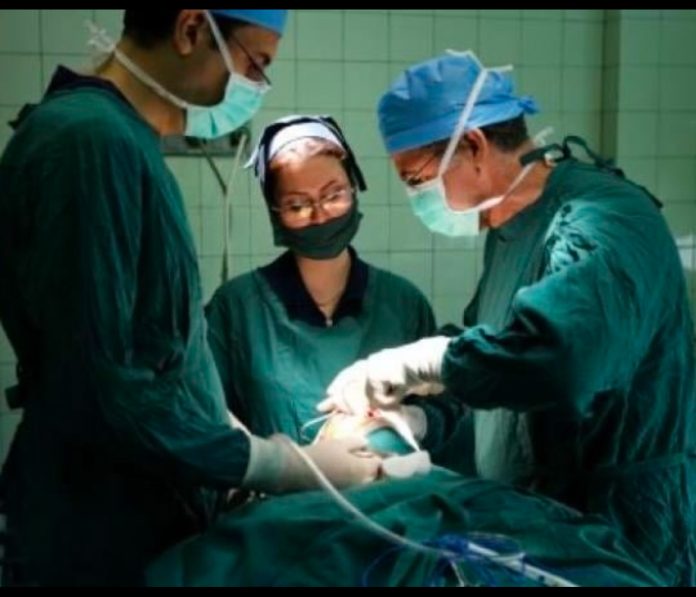Britain’s most famous transsexual autobiographies, Jan Morris’s Conundrum and April Ashley’s Odyssey, take their readers to Casablanca, Morocco, where the authors have sex reassignment surgery (SRS). Both place and practice are presented as exotic and otherworldly, partly as Morris is a travel writer by profession but also because then (Morris visited Dr Georges Burou’s surgery in 1972), SRS was harder to access in Britain, privately or via the NHS, performed little and discussed less.
Forty years on, I’m trudging along Fulham Palace Road on my way to Charing Cross Hospital, where they’ve performed SRS since 1936. I’ve come to this part of London for every consultation thus far (although the last time I was here wasn’t for the Gender Identity Clinic, but Norwich City’s 2-1 defeat at Fulham, where I saw something utterly extraordinary: Aaron Wilbraham scoring a Premier League goal). This time I’m attending the hospital, where they’ll examine my full medical history to see if I meet their physical requirements for surgery, and then the nearby clinic to confirm my understanding of the techniques and what to do beforehand.
I’ve never had any serious illnesses or injuries, but I know exactly how NHS hospitals look and feel as I spent 18 joyful months as a teenager in my first job, cleaning the one in east Surrey. The reception at Charing Cross looks very much like those in Redhill in 1997: stripped-down lilac walls, a child’s drawing on the noticeboard, the only concession to ornament. A nurse takes me next door to establish my blood pressure, check for MRSA by sticking cotton buds in my nostrils, asks if I’m diabetic or asthmatic (I’m neither), and returns me to the front desk.
A second nurse leads me to another room. She enquires about medication I take, allergies, any bad reactions to anaesthetics within my family, or, to my surprise, history of CJD, which I can’t recall being mentioned since the late 90s. She checks my body mass index: 26, slightly overweight as I never got back into regular exercise after starting transition – sporting spaces and culture are ill-equipped for anyone between male and female – but comfortably below their threshold of 30. I don’t smoke, I tell her; then, as ever, the question of how many units of alcohol I drink per week proves unanswerable. We settle for 14, which seems high as I rarely get drunk.
Displaying more insight into my dietary habits than I’d like, she hands me some notes to take to the clinic, saying, “If you stop at the sweet shop, don’t leave them behind as they’ve got all your personal details.”
Not stopping anywhere, I go and queue for my blood test. I pass the test and have the all-clear for my scheduled surgery date in six weeks, then head to the clinic for my appointment. An hour late, flustered, the nurse specialist calls me in. I discussed what I thought were the particulars of SRS last time, but they can’t let me leave my final pre-surgical visit without ensuring my full comprehension. She hands me a form:
Consent for operation of vaginoplasty
(this is the standard male to female gender reassignment operation)In this operation
A neovagina is created by making a space between the rectum and the prostate and lining this with skin from the penis and scrotum.
The erectile tissue of the penis is largely removed, as are the testicles, and this is completely irreversible.
The urethra is shortened and its opening placed in a position to resemble female anatomy.
Neo labia minora and majora (inner and outer lips) are fashioned out of the penile and scrotal skin.
An innervated neoclitoris is fashioned out of the glans penis. This is placed under a small hood at the front of the new labia.
As I read down to ‘The possible important complications’, the nurse begins to explain them, drawing diagrams to make absolutely sure that I understand. Reassuringly, she tells me that there have been no cases of rectal damage in the last year. She introduces me to the dilators I’ll employ three times a day for two months (at least) to keep the neovagina open, saying that besides the signed consent form, I must bring a mirror to hospital to help me learn how to use them.
I trust that the hospital nurses and the surgical team, who perform several of these operations a week, are competent (and that the general anaesthetic will keep me asleep throughout), but still I sit with teeth gritted, fists clenched, and toes curled, hoping every time the nurse draws breath that she’s finished telling me what would or could happen to my body. By the end, I guess that she’s been speaking for about two hours. I check my watch: it’s been 25 minutes.
I take the consent form back home, reflecting on how the autobiographies and the media have built up this surgery into something incomprehensible, almost mystical to outsiders. But for me, it’s just another aspect of the process of living.
Juliet Jacques







